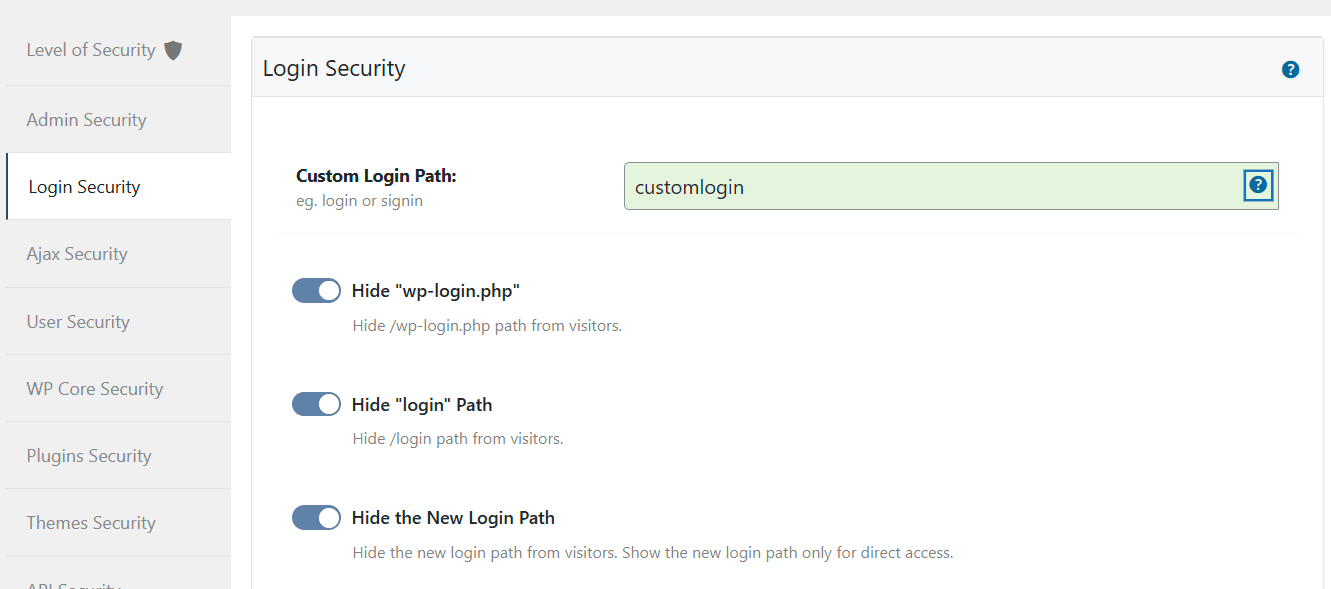How to Change WordPress Login Path with Hide My WP Ghost Plugin

Securing your WordPress website is crucial to protect it from potential hacking attempts. One of the first steps you can take is to change and hide the default login paths.
In this tutorial, we will explore how to change the WordPress login path using the Hide My WP Ghost plugin. By following these steps, you can enhance the security of your WordPress CMS and reduce the risk of brute-force attacks.
- Activate and Configure
- Activate Safe Mode or Ghost Mode
- Change WordPress Login Path
- Avoiding Path Conflicts
- Hide wp-login.php, login.php and Login Paths
- Hide the New Login Path
- Redirect when accessing the hidden paths
- Running a Security Check
- Conclusion
- Troubleshooting and FAQs
- Login Issue & Plugins Compatibility
- Related Articles
Activate and Configure
Activate Safe Mode or Ghost Mode
Before changing the login path, it is essential to activate either Safe Mode or Ghost Mode in the Hide My WP Ghost plugin. These modes provide an additional layer of security by hiding crucial paths and information related to your WordPress installation. To activate Safe Mode or Ghost Mode, follow these steps:
- After installing and activating the Hide My WP Ghost plugin, navigate to the WordPress dashboard.
- Locate the “Hide My WP” menu on the left-hand side and click on it.
- In the Hide My WP Ghost settings, find the “Change Paths” tab and click on it.
- Under the “Lever of Security” section, you will see options such as “Safe Mode” or “Ghost Mode“.
- Choose either Safe Mode or Ghost Mode based on your preferences.
- Safe Mode: This mode offers essential protection by changing paths and hiding sensitive information. It is recommended for most websites.
- Ghost Mode: This mode provides advanced protection by adding additional layers of security. It disguises the WordPress installation and plugins, making it more difficult for hackers to detect.
- Save the settings.

Change WordPress Login Path
Now that you have activated the desired security mode, it’s time to change WP login path. Hide My WP Ghost allows you to customize the login path with your own name. To change the login path, follow these steps:

- Go to Hide My WP > Change Paths > Login Security.
- Locate the “Custom Login Path” field and replace it with your preferred custom name.
- Important Note: Select a custom name that is not easily guessable to improve security.
- Save the settings.


Please Note: Hide My WP Ghost does not physically change the paths on your server. It uses rewrite rules to prevent any functionality errors.
Avoiding Path Conflicts
It’s important to ensure that other plugins have not customized the login path as well.
Hide My WP Ghost automatically checks for existing customizations and notifies you if it identifies a different path for the wp-login.
However, it’s crucial to be cautious if you have previously customized the login path using Hide My WP Ghost and later install a different plugin that also modifies this path. This can potentially lead to conflicts.
Always double-check if multiple customizations have been made to the wp-login path.
Hide wp-login.php, login.php and Login Paths
After customizing the login path, you can hide the WordPress common login paths from visitors. This adds an extra layer of security by keeping potential attackers unaware of the login paths.
To hide the wp-login.php, login.php and login paths, follow these steps:

Hide the New Login Path
Another security strategy is to not allow any redirects to the custom login path when it’s customized.
By activating this option, it will allow only direct access to the custom login path. Any redirect will be treated as hidden path.

Redirect when accessing the hidden paths
When someone accesses a hidden path like wp-login.php, it will be redirected to the Home Page by default. If you want to customize the redirect page or show an error code like 404 Page not Found or 403 Forbidden, select the redirect or the error message.
Running a Security Check
To ensure that the modified wp-admin path is effectively hidden, it’s recommended to perform a security check. This will verify if the changes made using the Hide My WP Ghost plugin are functioning correctly.

To run a security check, follow these steps:
- In the Hide My WP Ghost settings, navigate to the “Security Check” tab.
- Click the “Start Security Check” button to initiate the check.
- The security check will scan your website and verify if the wp-login path is properly hidden.
Conclusion
By utilizing the Hide My WP Ghost plugin to change the WordPress login path, you can significantly enhance your website’s security and mitigate the risk of brute force attacks.
Remember to activate Safe Mode or Ghost Mode, customize the login path, hide the common login paths, and perform a security check to ensure that your modified wp-login path remains hidden.
Implementing these measures will help safeguard your WordPress CMS and protect it from potential hacking attempts.
Troubleshooting and FAQs
Login Issue & Plugins Compatibility
While changing and hiding the default login path using the Hide My WP Ghost plugin can enhance security, it’s important to note that it may cause certain functionality issues in some cases. Here are a few troubleshooting steps to consider if you encounter any issues after implementing these changes:
Login Issues:
If you are unable to access the login page or encounter login-related errors after changing the login path, try the following:
- Ensure that you have entered the correct custom login path in the Hide My WP Ghost settings.
- Clear your browser cache and cookies to ensure you are accessing the latest version of the login page.
- If you have activated caching plugins, try clearing the cache to ensure the changes take effect.
- If possible, try accessing the login page from a different browser or device to see if the issue is specific to a particular setup.
Plugin or Theme Conflicts:
Sometimes, conflicts can arise between the Hide My WP Ghost plugin and other plugins or themes installed on your WordPress website.
To troubleshoot potential conflicts:
- Deactivate other plugins temporarily to see if the issue persists. If the problem goes away, it indicates a conflict with one of the deactivated plugins.
- Similarly, switch to a default WordPress theme temporarily to check if the issue is related to your current theme.
- If a conflict is identified, you may need to reach out to the respective plugin or theme developer for further assistance.
- If you have tried the troubleshooting steps above and are still experiencing issues, it is recommended to consult the support documentation or reach out to the Hide My WP Ghost plugin’s support team for further assistance. They will be better equipped to help you troubleshoot and resolve any specific issues related to the plugin’s functionality.
Remember, it’s always important to take proper precautions, perform regular backups, and test changes in a controlled environment before implementing them on a live website to minimize any potential disruptions.
Related Articles
- Select the redirect or the error message you want to return when someone accesses the common login paths.
- Hide wp-admin and wp-login.php from Source Code
- Temporary Logins
- Hide My WP Ghost Compatibility Plugins List


